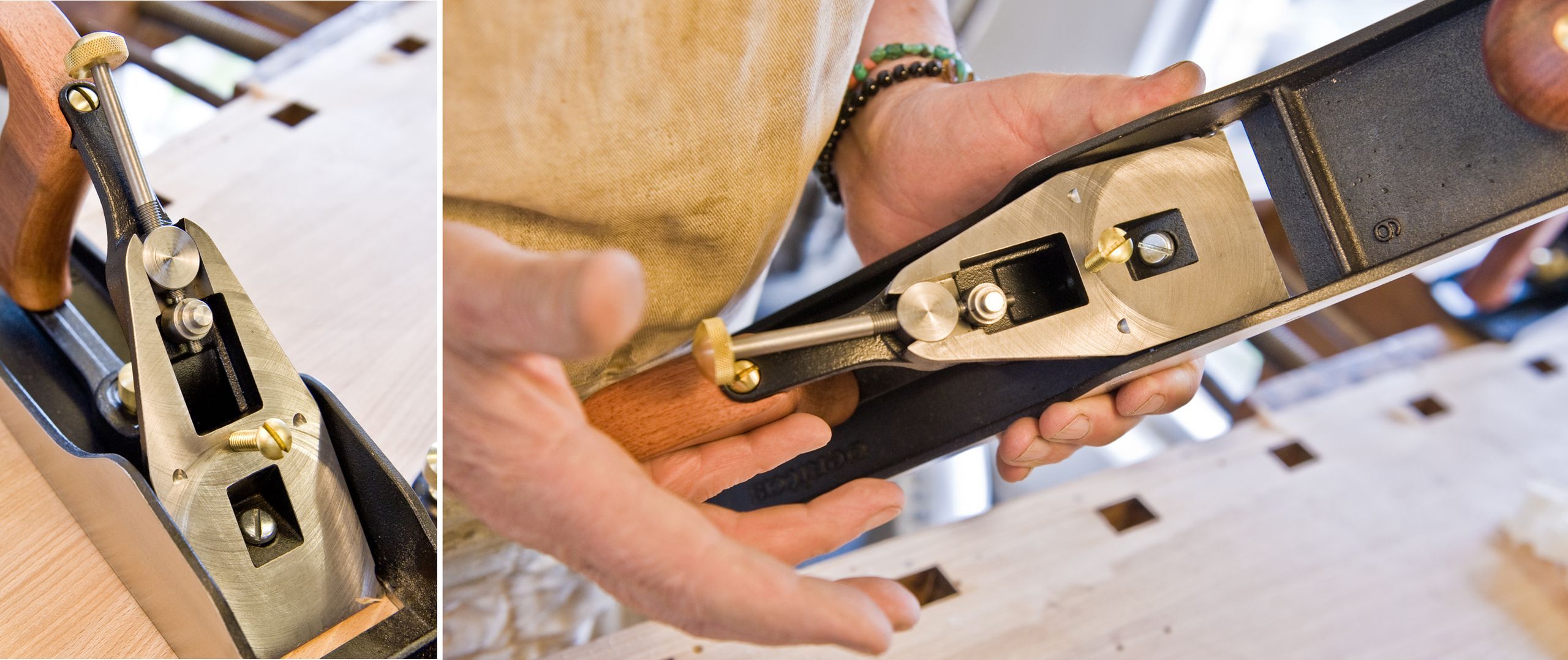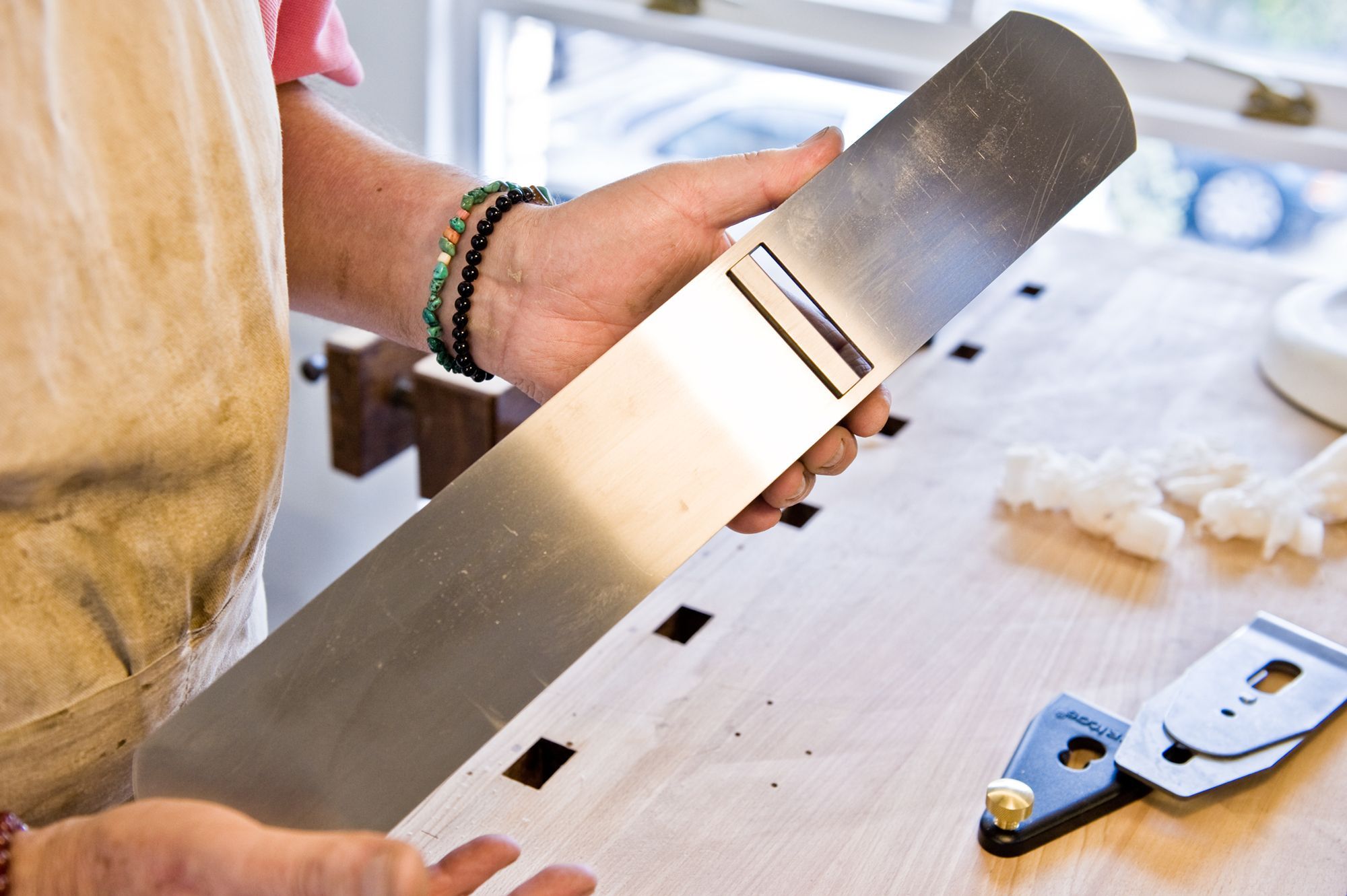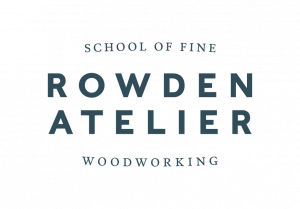“Are you sure you really want me to do this?”
Martin Brown of BriMarc tools had just brought me three shiny Veritas bench planes. They had been hand-picked and sent over from Canada, so I got the idea that they were pretty serious about this. “Sure”, he said, “You are a respected authority in the field and if you have a problem with our planes we need to hear it”.
Don’t you just love that open minded attitude to criticism. I try to avoid being critical of anybody’s work. Especially those who have made such an effort to improve my tools. Lie Nielsen, Veritas, and Clifton, have been superb at making better tools that enable us to do our jobs with greater ease and with greater pleasure.
So, why am I moaning about Veritas hand planes? Its a long story. It came about from an article I wrote several years ago. Veritas had just introduced a new range of bench planes. Two of my students, Yvonne and Martin, had bought the planes and both struggled to do the kind of accurate work we expect of our students. We have about a dozen students at Rowden workshops at any one time. I have been seeing students young and old, in our workshop since 1983, so I see an awful lot of tools being bought over the years.
We tracked the problem with Yvonne and Martin’s work to the issue of hand planing a flat surface, especially with small components. This is a critical skill, we only need flat, dead flat, when we are bringing two surfaces together. Then nothing else will do, often it’s been on a machine, then we need to slightly hollow it to place pressure on the glue line, it is about really accurate work. That’s what all the fuss is about.
After looking at their technique and scratching our heads we took a look at the planes & found that both were very slightly hollow just behind the blade and in front of the handle.
After looking at their technique and scratching our heads we took a look at the planes & found that both were very slightly hollow just behind the blade and in front of the handle. This was not a big hollow just a couple of thou [1000th of an inch] but a plane shaving can easily and regularly be less than a couple of thou. This hollow was affecting their work. Because both students had the same problem with the same newly designed planes I put this down to teething troubles with the new design. I spoke to my friend Phil the engineer, I described the problem with the planes “Ah” he said, “more likely that’s a grinding issue; When you grind a surface if you go too fast you build up heat, and get a hollow due to expansion, those pieces should probably have been ground then put in cold water overnight before taking off the final tickle with the grinder”.
So, I wrote my blog and thought not a lot more. Perhaps I should have conducted more rigorous research but we aim to make furniture here and stuff that gets in the way of that is not at the front of one’s mind.
We don’t ask tool makers to send us tools for review, we tend to review tools that students have bought and paid good money for. So, quite reasonably, we didn’t see another Veritas bench plane for a very, very, long time. But that article remained on the web both on my website and on forums. I dont know, but I understand that it turned up on a major American forum and views “got rather heated” and itwas subsequently removed from the site. Rob Lee of Veritas was involved in the thread and a couple of weeks later I get a call from Martin at BriMarc.
Soooo… how did they fair? Well, the first question is how do you measure them? If you use a workshop straightedge and square the chances are that they will never be accurate enough. Having dealt with irate tool makers for over 30 years we now have £500 worth of “atomic quality” flatness in the form of a large granite surface plate that is certified to be flat to a degree that defies belief. This lives underneath a foam lined lid which keeps it safe from careless students. For the first thing that happens with any plane that comes into this workshop is that it goes on that surface plate and is checked against the manufacturers specification for flatness by placing a feeler gauge all round it. I think that three thou is the going rate for flat. Though 1 1/2 thou is claimed by Lie Nielsen. I looked in the instruction book (something that does not come easily to me) and could not find a Veritas claim to flatness within any specified tolerance. As these planes have been hand-picked I didn’t expect them to do anything but hit this kind of specification, which they did.
Next comes twenty four quids worth of “straight”. Measuring with a brand-new Moor and Wright BS 939 spec square. I thought that I was using a reasonably good tool. I know that if I’d used even a high-quality workshop square that had been in general use I was risking getting a false reading. Drawing a marking knife down the blade of a square can wear it imperceptibly, but enough to give a two thou inaccuracy. I check the surfaces of all planes especially in front of the handle looking for any signs of hollowness. On the No4 Smoother, Nothing, Dead Flat, Zero, Nada! Well done fellas, but you are not out of the woods yet! On the 4 1/2 Smoother there was a hollow in front of the rear handle, but so shallow I could not measure it. On the No6 the hollow was more pronounced and was present in front of the blade and just in front of the rear handle.
We don’t ask tool makers to send us tools for review, we tend to review tools that students have bought and paid good money for.
If these last two planes were to stay here at Rowden Atelier we would probably have to address these issues to be able to use them in quality driven workshop like ours. We have very primitive flattening systems, a plate glass on a thick kitchen worktop and relatively fine abrasive. Its O.K for minor fettling like this, but really it shouldnt be a woody’s job to get planes flat. Veritas are not alone with this problem, we see Clifton planes getting the same treatment now and again and very occasionally a Lie Nielsen. Sometimes we see this occuring with tools that were flat a few months ago and have moved whilst we have used them. New ductile steel should be stable but sometimes stress seems to be still there from the making process. It is a “moving thing” you really need to check it after six months whatever the brand.
I’d asked Veritas to include a carbon steel blade in each of these planes. I believe that carbon steel or 01 steel gives a much higher quality edge, much sharper, though it may not hold that edge for ever like A2 (see more on carbon steel in this article). A2 steel which is more common these days is fine for people who don’t know how to sharpen. It holds a relatively dull edge for a very long time. However, in a professional workshop I think the option of having the carbon steel blade makes the Veritas planes extremely attractive.
One of the first tasks with any new tool is to flatten the back of the blade. This, with a hard steel, can take ages, all of the blades were beautifully flat and took only a short time to bring to a decent polish. Veritas claim to pay particular attention to this, getting the surface flat, lapped to a tolerance of 0.0002. This is wonderful.
Less wonderful is the description in the instruction booklet about the shape of the blade. “The shape of the blade at the cutting edge will generally be straight across for jointing or planing the edge of the board. However, for smoothing or working wood wider than the blade, you would either round the blade corners or crown it. This will prevent tearing the wood at the edges of the blade. The best compromise for a general purpose use is to round the corners of the blade but not crown it.”

Diagram 1 – WRONG a cross section of an edge out of square being corrected with a plane with a straight blade this is pretty well impossible
Diagram 2 – CORRECT planing an edge that is out of square use the curved iron flat on the job with the body of the plane slightly to one side. Simples
Diagram 3 – Jointing two edges together, slightly hollow the centre across the width to put first cramping pressure on the outside of the joint. NOTE this is exaggerated for clarity, the hollow is tiny on a real job.
This is very bad advice. I know of no way, whilst jointing two edges together out of square, that can be done quickly with a straight blade. The best way is using a crowned blade taking the plane to one side or the other removing more or less as the work demands. (see diagrams and captions) A straight blade demands that you angle the whole plane to one side or the other giving you little or no control. All our planes for all work have a slightly crowned iron. Smoothers have a very, very, slight crown. I would strongly recommend that Veritas reconsider this misleading advice.
One of the first tasks with any new tool is to flatten the back of the blade. This, with a hard steel, can take ages, all of the blades were beautifully flat and took only a short time to bring to a decent polish.
While reconsidering the text in the instruction leaflets I would also suggest they re-evaluate the information on micro levels, especially the information on back bevels. While it is perfectly possible to change the effective cutting angle of a bevel down plane from 45 degree to 60 degree by applying a small 15° back bevel, this is really now of academic interest. The scraping planing action desired would be most usefully achieved with a different plane. When we didn’t have very good bevel up planes made by both Veritas and Lie Nielsen this was valid information, now it’s not, it’s very confusing information.
Also confusing within the booklet is the reference to sharpening angles of 30 degrees with a honing angle of 35 degrees. Fine with the A2 blades but you don’t mention is this is O1 high carbon steel which should be ground at 25 degrees and honed at no more than 30 degrees. All the carbon steel blades came to me ground incorrectly to 30 degrees and it takes a long time to correct that. Sorry to get beady, but we do want this right, it is an instruction book after all.

See how the frog on the Veritas plane extends right down to the surface of the bench, giving much greater support to the blade nearer the cutting edge.
Look how the Norris style plain iron adjustment works twist to the knob to get adjustment up and down move up from side to side to get lateral adjustment. Fineness of adjustment is gained by fitting two threaded rods one inside the other.
See how the movable frog sits behind the blade

The back iron and the blade assembly came together very nicely. They sit in the plane on a very interesting frog assembly. There is a Norris style adjustment which I think is exceptionally good. I have used a Norris plane for over 30 years and can bear witness that it is one of the most efficient blade adjustments you can find. It puts both horizontal and vertical adjustment in one place.. The frog assembly is unusual in that it is particularly easy to adjust. It also offers considerably more support to the blade near the cutting edge as the frog extends down to the sole of the plane, behind the blade. Clever stuff and, I think, an improvement on conventional design.
So often with new Veritas ‘improvements’ I wonder “why have they gone about improving what was not a problem in the first place?” Nice solution, but what the heck was the question? This is not one of those occasions. Here their designers are attempting to answer a real issue of “how do we stop the cutting edge chattering under pressure?” Many of you will never have to worry about this, but some of us are planing curly maple and saying thank you very much Mr Lee.

In the beginning of the plane stroke here, the pressure is on my left hand on to the plane. See my forefinger extended down behind the blade of the plane, have a look also at the front leg extended forward.
In the middle of this plane stroke note that the power comes from the trunk and legs the arms are still tucked in and not driving the plane forward. The arms, instead of pressing down, making sure the surface of the plane is right on the job. My eyes are almost directly above the mouth of the plane and I’m watching where that shaving is coming out. Is it coming out dead centre or to the right or the left?
At the end of the plane stroke I’m still able to bear down on the rear of the plane which is important to prevent rounding over. See that my eyes are still above the mouth of the plane. NOTE THAT MY ARMS ARE NOT LETTING THAT PLANE EXTEND FORWARD. If I have a longer plane stroke to make I can continue the same shaving by moving my legs so making a controlled long single plane shaving
Next we come to using the damn things and here I have a real problem. Most tool reviews consist of a quick hone up and a bit of wafting of the tool over a bit of wood preferably in front of a camera. I wanted to put these planes into general use. Get them used for a few hours that’s when you find out the truth. But after a quick wizz nobody wanted to help me with a long term test. These planes work fine, they give lovely shavings but the common complaint was “I would not want to use any of them for more than a couple of hours”.
The problem is the design of the handle. We need to get this across, these are HAND tools, they have to fit our HANDS. They have to transmit our energy, our work, to the job. If the angle of the handle is wrong the whole thing is only useful as a steel paper weight. Make the handle like these, just too upright for proper control, it demands that you lower your elbow almost onto the bench surface and places too intense pressure on the heel of your palm with most plane handles the pressure is up around the base of the thumb where I believe the real control is. Again Veritas are not alone, I had the same with Quangshen planes. These are Chinese copies of Lie Nielsen planes and they managed to make the same mistake.

Norris plane handle: see how the shape is angled forward as you work the pressure is towards the top of this form by your thumb and forefinger
Lie Niesen smoother: see the same pattern, not as comfortable after an hour but O K.
Veritas: by comparison a very crude formed and given prolonged use an uncomfortable plane handle. Must do better!
In conclusion I think these are planes that still need work on the design to make them worth considering here at Rowden. I take my hat off to Rob Lee and everyone at Veritas for helping to make better hand tools. But these bench planes, for me, are at best a work in progress and not planes that we could recommend to our craftsmen, or our students.
-DBS-
